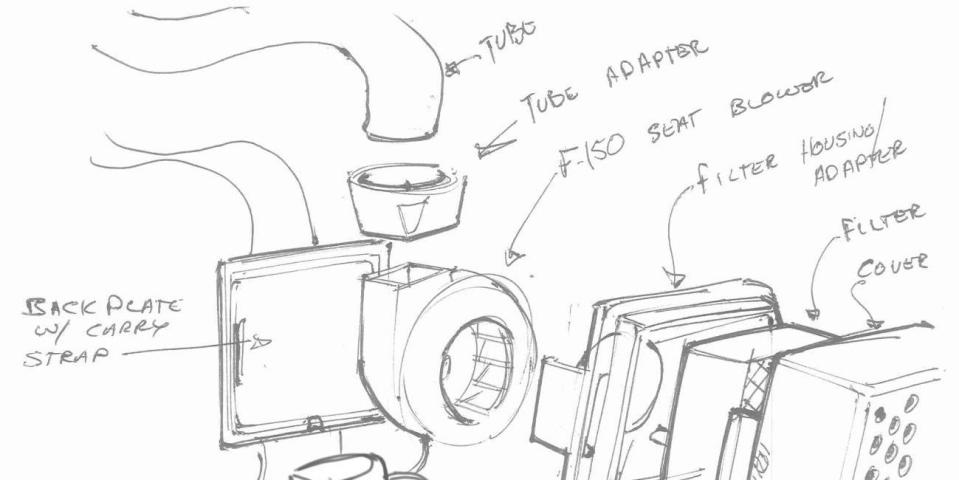How Ford Is Using Seat Ventilation Fans to Build Thousands of Respirators

Ford announced today that it is partnering with 3M in order to manufacture powered air-purifying respirators (PAPRs) as part of its response to the COVID-19 pandemic. These respirators are often called positive-pressure masks as they take contaminated air, pull it through a filter, then push it to the sealed mask using an air blower.
Ford will assist by providing components from their parts bin to build the respirators. The design released by Ford (top) will use 3M filters that draw air into a blower motor sourced from an F-150 and then pushed through a tube up to a mask that is sealed to the user's face.
The blower motor is sourced from the F-150's front seat assembly and is usually employed as part of the ventilated seat option. These motors are compact and run on 12 volts in the car, so they can be used with a battery pack in a situation where they need to be portable.
Seat blower motors may not seem like the first choice, but they are actually matched quite well to the blowers that are usually present in these types of respirators. According to Delta Group, seat blowers can operate at 9 to 16 volts while drawing around half an amp. This allows them to produce between 14 and 19 cfm of airflow.
In comparison, the motor inside the 3M TR-800 system produces between 6.7 and 7.8 cfm depending on the setting, making the seat blower a very close match. The seat blower's power can be adjusted via a variety of methods–like PWM control–in order to bring it down to the same level of airflow as the purpose-built respirator blowers.
This air flow rating is also partly why blower motors used for the primary HVAC systems in cars would not be a good choice. These units can produce hundreds of cfm of airflow. Size is also a factor. Seat blowers are usually around 3x3 or 4x4 inches wide and less than an inch tall. A primary HVAC blower motor is often 6x6 inches wide and over six inches tall.
Ford is planning to use power tool batteries to operate the respirators. Based on their sketches, it looks like they will use something similar to the Dewalt DC9071 12-volt. This battery is rated at 2.4 amp hours, which allows us to get an estimate of run time using the Time = Current/Amps formula. In this case we would take the 2.4 amp hours and divide it by 0.5 amps from the blower rating above to give us a rough run time of a little under five hours.

 Yahoo Autos
Yahoo Autos 